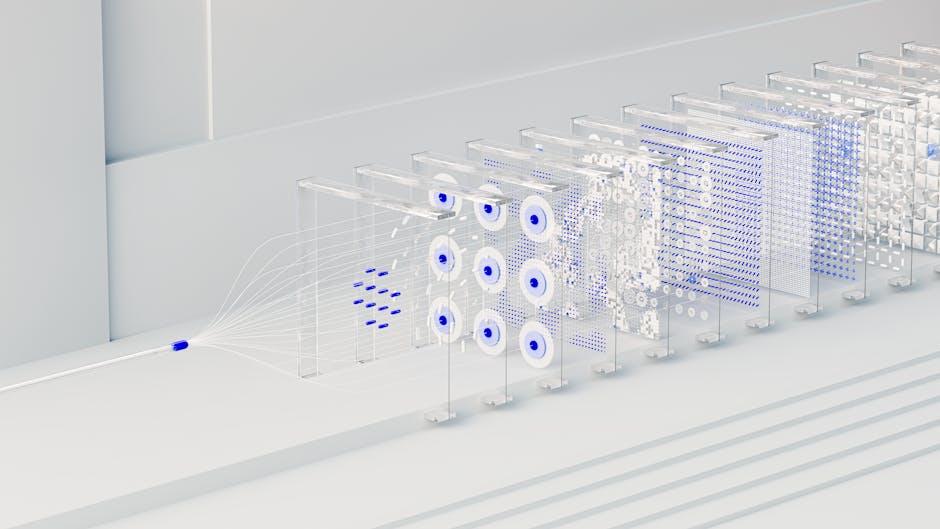The Role of Multi-Agent AI Systems in Complex Enterprises
In today’s fast-paced business landscape, enterprises confront staggering challenges that require advanced technological solutions. One of the groundbreaking innovations reshaping the way enterprises operate is Multi-Agent AI Systems. These systems leverage the power of multiple autonomous agents to collaborate, adapt, and solve intricate problems in complex organizational environments.
This article explores the pivotal role of multi-agent AI systems in complex enterprises, highlighting their benefits, practical applications, and transformative impact on decision-making and operational efficiency.
What Are Multi-Agent AI Systems?
Multi-Agent AI Systems consist of multiple intelligent agents that interact with each other and the environment to achieve individual or shared goals. Unlike a single AI model, multi-agent systems mimic real-world ecosystems where diverse entities cooperate or compete, making them ideal for complex enterprises with multifaceted processes and dynamic conditions.
Key Characteristics of Multi-Agent AI Systems
- Autonomy: Each agent operates independently with minimal human intervention.
- Social Ability: Agents communicate and collaborate effectively to negotiate tasks.
- Reactivity: Ability to perceive and respond to changes in the enterprise environment swiftly.
- Proactivity: Agents anticipate and initiate actions to achieve objectives even without direct commands.
Why Complex Enterprises Need Multi-Agent AI Systems
Complex enterprises deal with heterogeneous processes spanning departments, diverse teams, and a vast array of operational data. Here’s why multi-agent AI systems are a perfect fit:
- Scalability: They manage expanding operations seamlessly by distributing workload among agents.
- Adaptability: Capable of adjusting strategies dynamically in response to evolving business conditions.
- Enhanced Decision-Making: Collaborative agent intelligence helps synthesize vast data into actionable insights.
- Resilience: Failure of one agent doesn’t compromise the entire system, ensuring business continuity.
Core Benefits of Multi-Agent AI Systems in Enterprises
Implementing multi-agent AI systems brings numerous advantages, enhancing business growth and operational agility.
| Benefit | Description | Enterprise Impact |
|---|---|---|
| Improved Collaboration | Agents coordinate to align tasks and goals. | Boosts cross-departmental synergy and project success. |
| Faster Problem Solving | Parallel processing of complex issues. | Reduces downtime and accelerates innovation cycles. |
| Operational Efficiency | Automates repetitive and data-intensive tasks. | Lowers operational costs and increases accuracy. |
| Real-Time Decision Making | Instant analysis and response to market changes. | Improves competitive edge and responsiveness. |
| Scalable Architecture | Easily adapts to growing business complexity. | Supports enterprise expansion and digital transformation. |
Practical Applications of Multi-Agent AI Systems in Enterprises
Enterprises across various sectors employ multi-agent AI systems for diverse purposes. Some notable applications include:
- Supply Chain Management: Agents optimize logistics, inventory, and demand forecasting collaboratively.
- Customer Relationship Management (CRM): Intelligent agents provide personalized customer interactions through data sharing and learning.
- Financial Services: Agents perform risk assessment, fraud detection, and portfolio management simultaneously.
- Manufacturing Automation: Multi-agent teams handle production scheduling, predictive maintenance, and quality control.
- Smart Resource Allocation: Dynamic distribution of human and technological resources across projects and departments.
Case Study: Multi-Agent AI Systems in a Global Retail Enterprise
One global retail giant integrated a multi-agent AI system to manage its international supply network. This system comprised agents responsible for regional inventory, shipping logistics, and supplier negotiations.
- The agents communicated across borders to ensure just-in-time inventory replenishment.
- They dynamically adapted to disruptions like port delays or demand fluctuations.
- Resulted in a 25% reduction in supply chain costs and 30% faster order fulfillment times.
This example underscores how multi-agent systems can transform supply chains into highly responsive and efficient ecosystems.
Practical Tips for Implementing Multi-Agent AI Systems in Your Enterprise
To successfully deploy multi-agent AI systems, enterprises should consider the following:
- Define Clear Objectives: Establish what business problems the system should solve.
- Choose the Right Agents: Select agents with specialized expertise aligned with enterprise functions.
- Foster Inter-Agent Communication: Ensure agents can effectively share data and insights.
- Invest in Scalable Infrastructure: Support system growth with cloud computing and robust networks.
- Monitor and Optimize: Regularly assess agent performance to fine-tune decision-making processes.
Conclusion: Embracing Multi-Agent AI for Future-Ready Enterprises
Multi-agent AI systems represent a powerful paradigm for managing complexity in modern enterprises. By enabling autonomous agents to collaborate, adapt, and innovate, these systems drive superior operational performance and strategic agility.
As businesses evolve, embracing multi-agent AI will be crucial to maintaining competitive advantage, optimizing resources, and unlocking new growth opportunities. Organizations that invest in this intelligent, distributed approach to AI are well-positioned to navigate the uncertainties of tomorrow’s digital economy confidently.
Are you ready to accelerate your enterprise’s transformation with multi-agent AI systems? The future is collaborative, autonomous, and intelligent.











